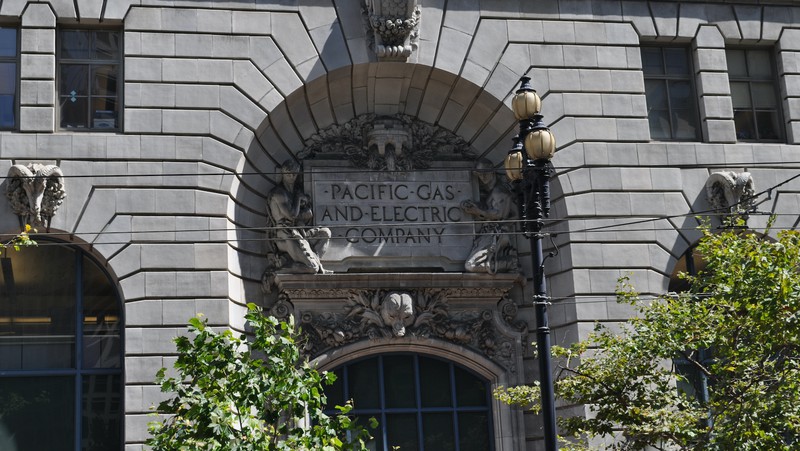
PG&E wants a new, 18 percent rate hike over five years starting in 2023. Joe Mabel / Wikimedia Commons C.C. 3.0
The state’s largest power company, Pacific Gas & Electric—which provides electricity to nearly half of all California residents, from Humboldt County in the north down to Santa Barbara County in the south—says that it is taking new measures to prevent its equipment from sparking or worsening wildfires. The catch is, PG&E wants its customers to foot the bill for protection from itself, according to reporting by the San Francisco Chronicle’s Kurtis Alexander.
Faulty PG&E power lines and other apparatus have set off dozens of fires, including 2018’s deadly Camp Fire, which killed 84 people in Butte County, and led the company to plead guilty to 84 counts of manslaughter.
On June 30, PG&E told the California Public Utility Commission (CPUC) that it plans to boost rates by 18 percent over its current rates, starting in 2023 and continuing through 2026, a hike that PG&E estimated at 5 percent per year for its customers. The hike would bring about $3.6 billion in new revenue into the utility giant. But only about half of that would go toward fire protection upgrades, the company said.
The hike would come after PG&E raised rates by 4.6 percent, or $8.73 per month for the average customer, starting in March of this year, despite California’s unemployment rate sitting at 8.3 percent due largely to the ongoing COVID-19 pandemic. The CPUC approved that rate hike in December, with PG&E pledging that much of the new revenue would go to wildfire prevention.
The company’s vice president of Regulatory and External Affairs, Robert Kenney, also promised at the time that none of the new revenue from the 2021 rate hike would go to pay lawsuit settlements over wildfire damage and injuries, nor would it be used to pay the salaries of PG&E executives.
PG&E came out of bankruptcy last year, agreeing to pay $13.5 billion to victims of the Camp Fire and other fires started by PG&E mishaps. The 2019 Kincade Fire in Sonoma County and the 2020 Zogg fire, which claimed the lives of four people in Shasta County, have also been attributed by state investigators to faults with PG&E equipment.
In 2019, the CPUC issued a 700-page report concluding that PG&E failed to maintain a century-old power line that ran straight through a heavily wooded, windy and mountainous area. A live wire broke loose from that power line, igniting the blaze that became the Camp Fire.
The Butte County District Attorney’s office also conducted an investigation, resulting in its own 92-page report, slamming PG&E for the company’s “reckless actions” that created the risk of a “catastrophic fire,” concluding that “PG&E knew of that risk and PG&E ignored the risk by not taking any action to mitigate the risk.”
Now, the utility company wants California consumers to pony up even more, partly to finance the company’s wildfire prevention measures—a request that watchdog group The Utility Reform Network (TURN) blasted as “a slap in the face to millions of California residents still hurting economically from the pandemic and struggling to get back on their feet,” according to a report by KXTV in Sacramento.
The CPUC has not yet ruled on the new PG&E rate hike plan.
Short articles summarizing reporting by local news sources with linkbacks to the original content.